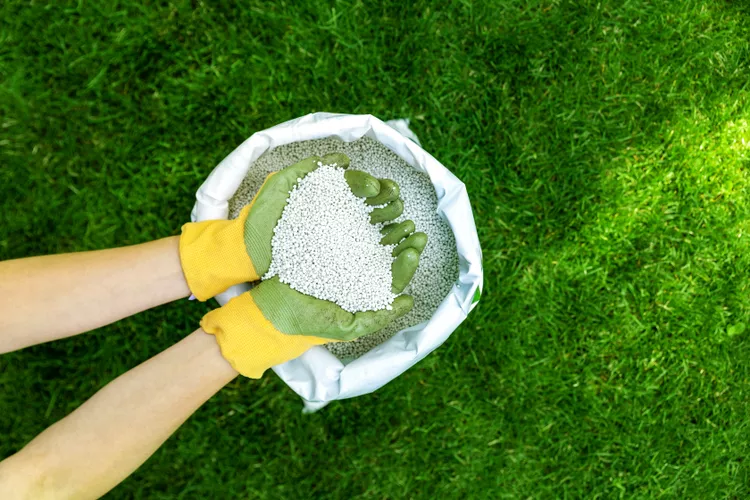Spring is a wonderful time of year. The fresh air, blooming flowers, longer days, and soft green grass invite us and our pets to enjoy the outdoors. However, along with these joys come seasonal hazards that pet owners need to be aware of to protect their furry companions. While some dangers are mild and manageable, others can be severe or even life-threatening if overlooked.
Veterinary toxicologist Dr. Renee Schmid, DVM, DABVT, DABT, highlights several key springtime risks for pets and shares practical advice on how to keep your beloved animals safe throughout this vibrant season.
1. Keep Lawn Care Products Away from Pets
Spring often means gardening, lawn fertilizing, and weed control—but these activities come with hidden dangers for pets. Fertilizers, herbicides, and pesticides can cause serious digestive upset if ingested by dogs or cats. Vomiting, diarrhea, and stomach pain are common symptoms after exposure.
To minimize risk, always store lawn care products securely, far out of reach of pets. Even residues on grass or paws can irritate sensitive animals, especially if they lick their feet afterward. Dr. Schmid advises keeping pets off treated lawns during the manufacturer’s recommended waiting periods to avoid these issues.
If you suspect your pet has consumed any lawn chemicals, contact your veterinarian or a pet poison hotline immediately for guidance.

2. Don’t Forget Flea, Tick, and Heartworm Prevention
Spring and summer bring an increase in fleas, ticks, and other pests. These tiny parasites can cause discomfort, allergic reactions, and even transmit dangerous diseases such as Lyme disease.
To keep your pet protected, maintain a consistent schedule of flea, tick, and heartworm preventatives, and discuss the best options with your veterinarian. Ticks should be removed promptly and carefully—preferably with a tick removal tool or tweezers—to prevent disease transmission.
For those living in areas with high tick activity, ask your vet about Lyme disease vaccination for added protection. You can also use resources like the CDC’s tick surveillance maps to understand regional risks.
3. Be Wary of Toxic Plants and Flowers
Spring heralds the arrival of beautiful blooms, but many common plants can be hazardous to pets. Lilies, for example, are extremely toxic to cats and can cause kidney failure or even death. Because lilies often appear in floral arrangements during holidays like Easter and Mother’s Day, it’s best to keep them out of your home if your cat tends to chew on plants.
Other dangerous plants include Japanese yew, which can affect heart function, and the bulbs of daffodils and tulips, which may cause stomach upset or intestinal blockages if eaten.
If you’re unsure about the safety of a plant in your garden or home, consult the ASPCA’s comprehensive plant toxicity database for dogs and cats.

4. Watch Out for Bees and Insect Stings
Bees and other stinging insects become more active during spring and summer. While many pets may only experience mild swelling or irritation from a sting, some can have severe allergic reactions, especially if stung on sensitive areas like the face.
If your pet is stung, monitor them closely. Minor swelling on a limb might be manageable with your vet’s advice, sometimes including an over-the-counter antihistamine like Benadryl. However, stings around the face or signs of distress warrant immediate veterinary attention.
5. Recognize Signs of Seasonal Allergies
Just like people, pets can suffer from seasonal allergies triggered by pollen, grass, and mold. Common symptoms include itching, scratching, licking paws, recurring ear infections, and watery eyes.
If you notice these signs, consult your veterinarian. Many allergy treatments, including medications and special shampoos, can help alleviate your pet’s discomfort and improve their quality of life during allergy season.
6. Update ID Tags and Microchip Information
With warmer weather encouraging more outdoor activities, it’s crucial to make sure your pet’s identification is current. Check that their collar fits well and includes an ID tag with up-to-date contact information.
If your pet has a microchip, verify that your registration details are accurate. This simple step significantly increases the chances of a happy reunion should your furry friend wander off.

7. Store Cleaning Products Safely During Spring Cleaning
Spring often brings the urge to deep clean your home, but many cleaning agents can pose a risk to pets. Even diluted products like surface sprays or wipes can cause mild stomach upset if ingested. More concentrated cleaners can lead to serious injuries such as mouth and esophageal ulcers.
Always store cleaning supplies in secure cabinets and keep pets away from freshly cleaned surfaces until they are fully dry. If your pet accidentally ingests any cleaning chemical, contact your vet or a pet poison control hotline immediately.
Final Thoughts
Spring is a season full of life and renewal, offering wonderful opportunities to bond with your pets outdoors. At the same time, it’s important to remain vigilant about the seasonal hazards that could impact their health and safety.
By securing lawn chemicals, maintaining parasite preventatives, avoiding toxic plants, monitoring for allergies, updating identification, and storing household chemicals properly, you can enjoy a safer, happier spring with your furry companions.
Your pets depend on you to protect them from these seasonal risks, so keep these tips in mind to ensure their health and happiness all spring long.

